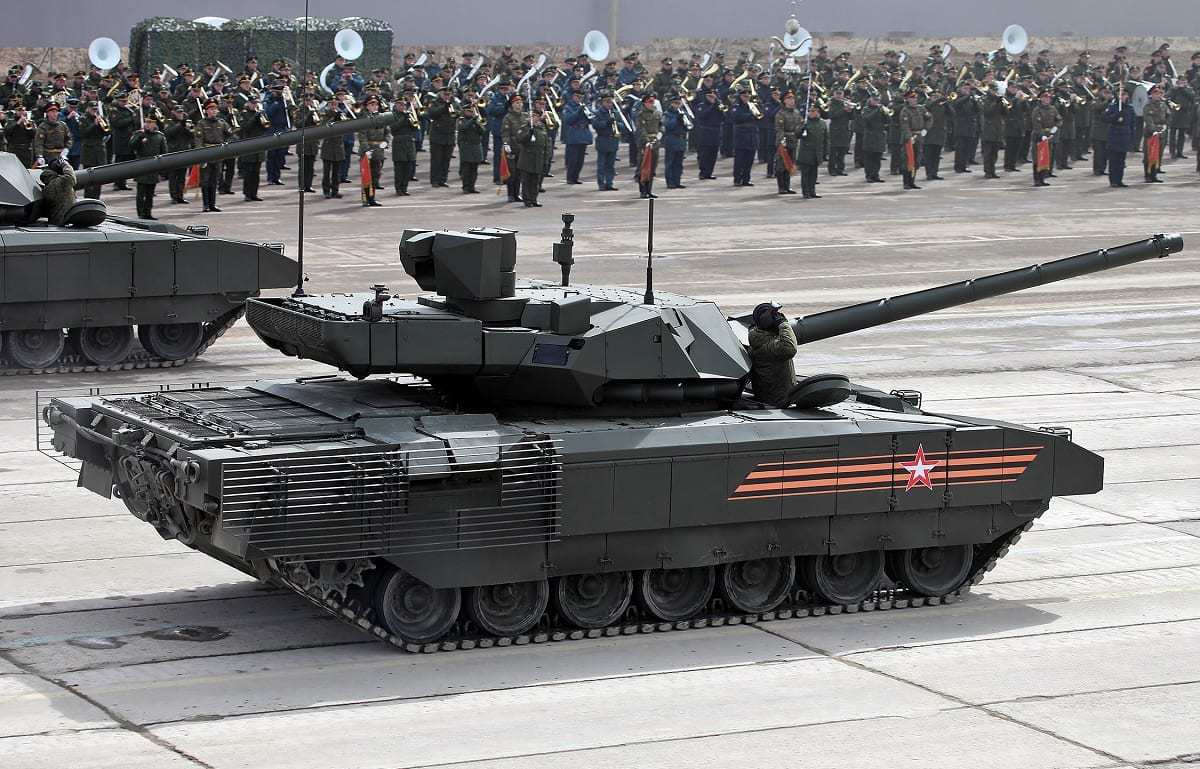Russia’s fleet of T-14 Armata tanks has reportedly been withdrawn from the frontlines of the Ukraine invasion.
According to Russian state-media outlet TASS, the Armatas were initially tested in combat by units of the Southern Military District and “necessary trials” of the tank would continue following their departure from the war.
The T-14 made its debut in Ukraine this April, making its tenure in the conflict very short. A video depicting one of these armored vehicles firing on Ukrainian positions circulated in May, marking the T-14s first reported operation amidst the invasion.
The Armatas’ short lived participation in Kyiv could indicate that the armored vehicle is not yet performing up to standard. The departure of these tanks coincides with Kyiv’s counter-offensive and does not bode well for Russia’s already severely lacking tank numbers.
Introducing the Armata
The Armata main battle tank (MBT) was conceptualized following the cancellation of the T-95 in 2010. Russian manufacturer Uralvagonzavod based the Armata in part on its nixed predecessor and by 2015, the T-14 made its first public appearance on a train carriage in Alabino.
That same year, the Armatas were rehearsing for Moscow’s annual Victory Day Parade when one T-14 failed to start up. Although this issue was pretty quickly rectified, it still indicated that the MBT was not ready to enter service quite yet. Russia’s Ministry of Defense and Trade revealed that the Armata had been combat tested in Syria around 2020.
A few months after Russia’s Ukraine invasion commenced, the Armatas production process halted. However, around this time, footage depicting the T-14s reportedly training for the invasion began to circulate.
The Armata MBT sports a different look than its Russian counterparts. Perhaps most notable is its unmanned turret. Since all tank crew members are positioned in a protected separate compartment, their survivability is much higher. As detailed by Military Watch Magazine,“The tank’s frontal base armour protection of over 900mm, paired with Malachit explosive reactive armour and the AFGHANIT active protection system, provides an extreme degree of survivability.
The T-14’s sensors and armaments are also highly prized and major improvements over those of older vehicles, with its Vacuum-1 APFSDS projectiles having an extreme penetrative capability considered sufficient to frontally penetrate any of the vehicles currently in the Ukrainian theatre.”
The current state of Moscow’s tank fleet
While the Kremlin regularly boasted that its “top-of-the-line” armored vehicle could demolish enemy tanks, the T-14’s delayed and short stint in the Ukraine invasion suggests otherwise.
When the Armata program was first announced more than one decade ago, the Kremlin claimed that it would produce more than 2,000 T-14s by 2020. Obviously, this plan has not panned out like Moscow had expected.
Similar to many other Russian weapons and military systems, the Armata’s capabilities have likely been exaggerated.
Now that Kyiv’s counter-offensive is in full swing, Russia’s dwindling tank fleet will suffer further. The U.S. and other North Atlantic Treaty Organization (NATO) allies have pledged to deliver advanced Western MBTs to aid Ukraine’s defense efforts, including the American M1A1 Abrams, the British Challenger and the German Leopard 2.
Maya Carlin, a Senior Editor for 19FortyFive, is an analyst with the Center for Security Policy and a former Anna Sobol Levy Fellow at IDC Herzliya in Israel. She has by-lines in many publications, including The National Interest, Jerusalem Post, and Times of Israel. You can follow her on Twitter: @MayaCarlin.
From 19FortyFive

